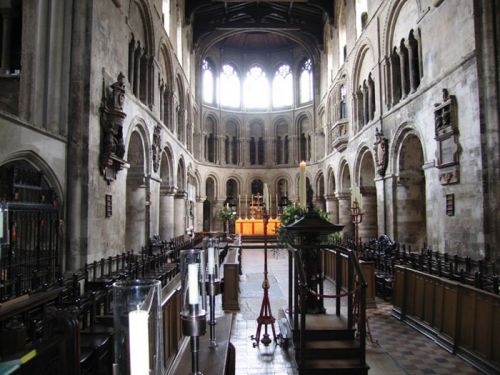 You gotta hand it to the Brits. The journalists over there sure know how to cover a wedding.
The Telegraph rolled out the heavy artillery to cover what may have been the most celebrated wedding in the United Kingdom since that of Prince Charles and Lady Di. I am referring, of course, to the same-sex union rites for the Rev. Peter Cowell and the Rev. Dr. David Lord.
You gotta hand it to the Brits. The journalists over there sure know how to cover a wedding.
The Telegraph rolled out the heavy artillery to cover what may have been the most celebrated wedding in the United Kingdom since that of Prince Charles and Lady Di. I am referring, of course, to the same-sex union rites for the Rev. Peter Cowell and the Rev. Dr. David Lord.
Here's the hard news lede, served up by Jonathan Wynne-Jones, the newspaper's religious affairs correspondent.
An Anglican church has held a homosexual "wedding" for the first time in a move that will deepen the rift between liberals and traditionalists, The Sunday Telegraph can disclose.
Two male priests exchanged vows and rings in a ceremony that was conducted using one of the church's most traditional wedding rites -- a decision seen as blasphemous by conservatives. The ceremony broke Church of England guidelines and was carried out last month in defiance of the Bishop of London, in whose diocese it took place. News of the "wedding" emerged days before a crucial summit of the Anglican Church's conservative bishops and archbishops, who are threatening to split the worldwide Church over the issue of homosexual clergy.
Notice how, in just a few sentences, the reporter hit all the different levels of this Anglican blockbuster -- both local, diocesan, national and global. Good show.
But this is one case where it really helps to remember that this story focuses on the radical redefinition of an ancient sacramental rite in a church that claims apostolic ties to Catholic orders and creeds. This has to be a story about worship and doctrine.
That's where another Telegraph story really shines. To truly grasp the importance of what is going on, and all the fine details, I suggest that GetReligion readers click here and print out a blogger's close analysis of the actual text for this same-sex rite, compared and contrasted with the Book of Common Prayer rite that it is modernizing or postmodernizing, depending on one's point of view. This story focuses on the worship service itself, making clear the degree to which this was a wedding, no matter what the high Anglican spinners try to say after the fact. And the setting? Location, location, location. Read it all. But here is a sample:
St. Bartholomew the Great at West Smithfield, in the City of London, dates from the 12th century but it can have seen few more historic events than this.
Greeted with a fanfare of trumpets, the Rev. Peter Cowell and the Rev. Dr. David Lord celebrated their civil union with the kind of pomp and pageantry reserved for royal weddings. The couple walked up the aisle to Mendelssohn's march from A Midsummer Night's Dream dressed in morning suits, with their bridesmaids and best men following behind.
A robed choir sang in Latin as incense was burned on the high altar. The service was rooted in the most traditional style, from the music to the liturgy, which was based on the 1662 Book of Common Prayer. The Rev. Martin Dudley addressed the congregation: "Dearly beloved, we are gathered together here in the sight of God, and in the face of this congregation, to join together these men in a holy covenant of love and fidelity."
To conservative Anglicans the use of those words in such circumstances might be blasphemous, but the packed pews indicated the level of support for the couple.
One more detail, in a nation that truly sweats the details of class and politics.
Cowell is who is a hospital chaplain at Barts and priest at Westminster Abbey, which means he works at the heart of the system that serves the queen. Thus, he are told:
Among those celebrating with the couple were some of the Church's most senior clergy, including Canon Robert Wright from Westminster Abbey and chaplain to the Speaker of the House of Commons.
"It was incredibly grand -- the most spectacular wedding I've ever been to," said one guest. "They had a 10-tier wedding cake. I've never seen a cake that big."
So, do you think that this might come up for discussions in Jerusalem and then in Canterbury?
